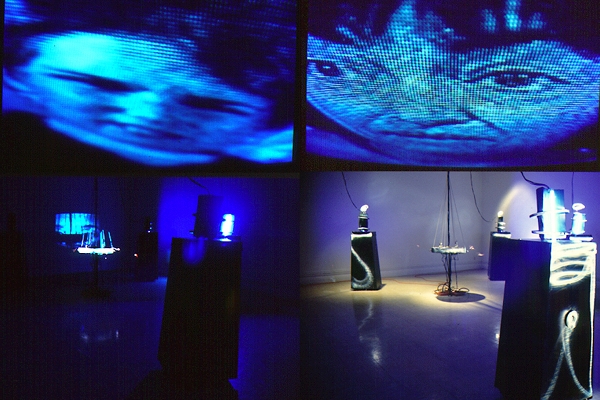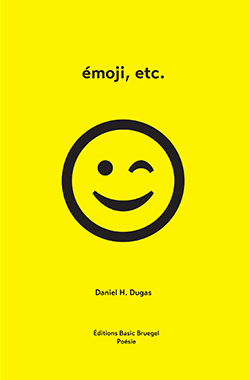Pour apaiser les dieux (2022)

À mesure que les prêtres se hâtaient, la frénésie du peuple augmentait ; le nombre des victimes diminuant, les uns criaient de les épargner, les autres qu’il en fallait encore. On aurait dit que les murs chargés de monde s’écroulaient sous les hurlements d’épouvanté et de volupté mystique. Puis des fidèles arrivèrent dans les allées, traînant leurs enfants qui s’accrochaient à eux ; et ils les battaient pour leur faire lâcher prise et les remettre aux hommes rouges. Les joueurs d’instruments quelquefois s’arrêtaient épuisés ; alors on entendait les cris des mères et le grésillement de la graisse qui tombait sur les charbons. Les buveurs de jusquiame, marchant à quatre pattes, tournaient autour du colosse et rugissaient comme des tigres ; les Yidonim vaticinaient, les Dévoués chantaient avec leurs lèvres fendues ; on avait rompu les grillages, tous voulaient leur part du sacrifice ; – et les pères dont les enfants étaient morts autrefois, jetaient dans le feu leurs effigies, leurs jouets, leurs ossements conservés. Quelques-uns qui avaient des couteaux se précipitèrent sur les autres. On s’entr’égorgea. Avec des vans de bronze, les hiérodoules prirent au bord de la dalle les cendres tombées ; et ils les lançaient dans l’air, afin que le sacrifice s’éparpillât sur la ville et jusqu’à la région des étoiles.
Gustave Flaubert, Salammbô
Alors que j’étais étudiant à la polyvalente de Mathieu-Martin une professeure de français nous avait fait lire Salammbô de Flaubert. Ce roman historique, de tumultes et de batailles, d’hommes écrasés par des éléphants, d’autres dévorés par des lions, raconte l’histoire de Salammbô et de son amour pour le chef des mercenaires. La ville de Carthage est assiégée par les barbares qui demandent à être payés pour leurs services rendus en Sicile. Bientôt la ville manque d’eau et de nourriture, et dans la chaleur de plus en plus accablante le vent de la violence souffle avec une énergie redoublée. Ce qui m’a le plus marqué dans ce livre a été le chapitre consacré au Moloch, un monstre divin dévorateur au corps d’homme et une tête de taureau à qui l’on sacrifiait des enfants.
En apprenant la nouvelle de la fusillade de Uvalde au Texas, et un peu plus tard en voyant le logo de la convention de la National Riffle Association de Houston, je me suis rappelé Salammbô et l’infanticide rituel au Moloch. Ces enfants jetés dans l’antre du monstre, sacrifiés pour apaiser les dieux, avaient soudainement une présence texane. Les évènements qui ont eu lieu dans cet état américain, comme ceux de Sandy Hook au Connecticut, sont d’une horreur impossible à quantifier, mais aux États-Unis, et ce jusqu’à nouvel ordre, c’est le prix que les Américains ont décidé de payer. Pour le droit d’accès aux armes à feu un échange doit avoir lieu, une transaction, un sacrifice : des enfants doivent mourir. Dans le continuel défilement de ces tragédies, il devient de plus en plus clair que la fonction première de ces sacrifices est de rendre hommage au dieu des armes à feu. Ces drames sont en quelque sorte les pierres d’assise sur lesquelles la soi-disant sacralité du deuxième amendement est érigée. Il est vrai que la réaction de Joe Biden est immensément plus directe que celle de Barack Obama après Sandy Hook, mais avant de se réjouir de la fin des massacres, il faudra voir si ces vœux se traduiront en actions concrètes. D’ici là, les sacrifices ne font pas seulement partie du quotidien, ils sont essentiels au culte.
Dans cette optique, les Américains et les médias ne devraient plus parler des vies perdues, car elles sont garantes du privilège de tirer sur tout ce qui bouge. Dans un pays où il y a plus d’armes que de personnes, notre indignation est sans importance, elle ne changera pas le cours des choses. Dara Rosen, une ancienne élève et survivante de la fusillade à l’école Marjory Stoneman Douglas de Parkland, en Floride, confiait dans un article paru le 29 mai 2022 dans le journal The Guardian, qu’elle-même perdait espoir de voir les choses changées. La mort de vingt enfants âgés de six à sept ans à Sandy Hook n’a pas réussi à faire tourner le vent de la folie, et le poids des dix-neuf enfants âgés de 9 ou 10 de la fusillade d’Uvalde ne suffira probablement pas à changer la donne. Le vent souffle trop fort et la chaleur est de plus en plus accablante.
I hid in fear while a gunman killed 17 at my school four years ago. Why has nothing changed?
https://www.theguardian.com/commentisfree/2022/may/29/texas-school-shooting-us-gun-control
Salammbô – Chapitre 13 – Moloch
https://www.mediterranees.net/romans/salammbo3/salammbo13.html
Les sacrifices d’enfants chez les Carthaginois
https://www.lhistoire.fr/les-sacrifices-denfants-chez-les-carthaginois
Le sacrifice dans la Bible / Sa fonction théologique
https://www.cairn.info/revue-pardes-2005-2-page-161.htm
National Rifle Association
https://www.nraam.org/
The True History Of Moloch, The Ancient God Of Child Sacrifice
https://allthatsinteresting.com/moloch
Biden demands action on guns: ‘How much more carnage are we willing to accept?’
https://www.politico.com/news/2022/06/02/biden-demands-action-on-guns-how-much-more-carnage-are-we-willing-to-accept-00036916
The Real Reason Obama Didn’t Pass Gun Control
https://www.politico.com/magazine/story/2019/08/16/obama-gun-control-227625/
Now is the time to do something about gun violence.
https://obamawhitehouse.archives.gov/issues/preventing-gun-violence
President Obama Speaks on the Shooting in Connecticut
https://obamawhitehouse.archives.gov/blog/2012/12/14/president-obama-speaks-shooting-connecticut
Alas! Atlas! (2012)
Fog and reality! Cloud and mappemonde!
Victor HUGO
KEYWORDS: visualisation, cartography, cartogram, Facebook, US presidential election 2012, Purple America
Recently, I opened my Facebook account to see the juxtaposed images of two maps of the United States. The first map illustrated the results of the 2012 American presidential election: blue states for the Democrats and red states for the Republicans. The second map, dated 1846, was a representation of abolitionist and slave states before the start of the American Civil War.[1]

What struck me at first glance was the apparent similarity between the two maps. It seemed that the distribution of political forces was the same. The abolitionist states and territories of 1846 were, more or less, the Democratic states of 2012. The slave states and territories were clearly in the camp of Republicans. The effectively demonstrated parallels were so compelling that I immediately shared the image. This commentary by Michelle Lawrence was accompanied by two short sentences: “Sometimes change is really hard especially when people don’t want to change. Just something to ponder.” Indeed, looking at the two images gave the impression that nothing has changed in the one hundred and sixty-six years that we have travelled. In short, as the saying goes, ‘the more things change, the more they stay the same.’
The concept of mapmaking inspires respect; there is an air of truth and authenticity about the practice. It is difficult to doubt the reality of map, maybe because of an innate trust we carry for them. In any case, I was there at my computer, confronted with this terrifying image of an unchanging world. And I was disappointed to think that we, as a society, have made such a long journey to be staring back at that very sad starting point. After a few minutes, my enthusiasm to share this with other Facebook users quickly turned into interrogation. What was the reality mapped out before me? Is the world of today really the same as the world yesterday?
To put it all in a historical context and to see if the American electorate had evolved over the years, I began to think of other presidential elections. I thought right away of the Ronald Reagan tidal wave of 1984. The winds of conservatism swept across America leaving only Minnesota and Washington, DC to the Democrats. At the other end of the spectrum, there was the decisive victory of Franklin D. Roosevelt (1936) who was re-elected triumphantly leaving the Republicans with the two small states of Maine and Vermont. On the other hand, and in an almost negative image of the 2012 election, we find the Jimmy Carter election results of 1976. It firmly placed in the Democratic camp all of the southern states often associated with the Republicans.[2]

On this closer examination, I had difficulty in reconciling the three maps above to the political immutability underpinned by the ‘2012 – 1846’ image. Were there changes or not? Looking at a wider scope of images mapping the results of previous presidential elections, it is clear that there have been many changes over the years. The problem with a comment like the one that Michelle Lawrence made, is that it is simplistic and sensationalist. The difficulty of reconciling what is seen and what is said resides in the fact that these particular maps are not speaking about the same thing. The context is warped.
Presenting pictures that look alike offers a simplified view of the past and of the present. It is a truncated, veritably ‘fake’ reality. There has been a lot of talk about polarized American viewpoints and this dual image suddenly offers proof of legendary division. If we are truly interested in evaluating voter diversity in the United States, we should look farther. Perhaps we should begin with the maps of Purple America[3], and migrate to the cartograms of election results complied by Mark Newman of the University of Michigan.[4]
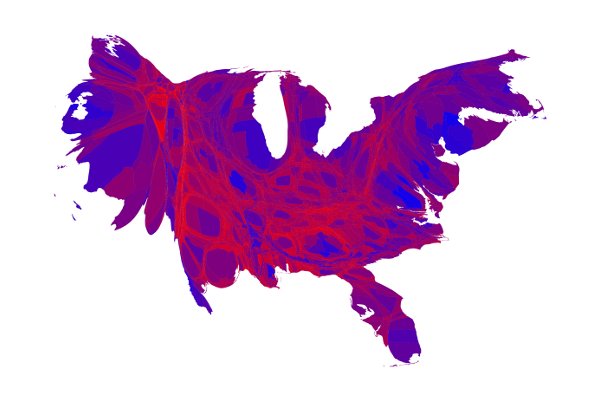
But, the deed was done. I had, in a burst of thoughtless enthusiasm (as is often the case on the Internet), joined the ranks of 45,000 other Facebook users who had also shared the maps and the comment. At first, the juxtaposition of the NOW and THEN image, seemed to offer an eloquent synthesis of the situation, but ultimately it is clear that all who clicked to share were duped. If the shortcut was not a trap, it was certainly a cul-de-sac.
Daniel Dugas
November 12, 2012
Footnotes
[1] Michelle Lawrence, Facebook Account, November 10, 2012
http://www.facebook.com/michelle.lawrence.92754
[2] The website 270 to win offers interactive maps of every presidential election since 1789. To put the maps in context the site also lists the major issues of the day. http://www.270towin.com/ November 10, 2012
[3] Robert J. Vanderbei, Election 2004 Results: http://www.princeton.edu/~rvdb/JAVA/election2004/ November 10, 2012
[4] Mark Newman, Department of Physics and Center for the Study of Complex Systems, Maps of the 2012 US presidential election results : http://www-personal.umich.edu/~mejn/election/2012/
See also: 2012 U.S. Election Visualizations, Christopher G. Healey, Department of Computer Science, North Carolina State University http://www.csc.ncsu.edu/faculty/healey/US_election/
November 10, 2012
Hélas ! Atlas !
Brume et réalité ! nuée et mappemonde !
Victor HUGO
KEYWORDS : visualisation, cartographie, cartogramme, Facebook, élection présidentielle 2012, Amérique violette
Récemment, en ouvrant mon compte Facebook, j’ai vu une image composée de deux cartes géographiques des États-Unis. La première carte illustrait les résultats des récentes présidentielles américaines [1]. On y voyait en bleu les états qui avaient voté pour les démocrates et en rouge les états républicains. La deuxième carte, datée de 1846, était une représentation des états abolitionnistes et esclavagistes avant le début de la guerre civile américaine.

Ce qui frappait au premier coup d’œil était l’apparente similarité des deux cartes, on aurait dit que la distribution des forces politiques était la même. Les états et les territoires abolitionnistes de 1846 correspondaient plus ou moins aux états démocratiques de 2012 alors que les états et territoires esclavagistes se retrouvaient dans le camp des gains républicains. L’effet était si prenant que j’ai immédiatement partagé l’image. Ce commentaire cartographique de Michelle Lawrence était accompagné de deux petites phrases : “Sometimes change is really hard especially when people don’t want to change. Just something to ponder.”
Effectivement, en examinant les deux cartes on a bien l’impression que rien n’a changé. Bref, comme le dit l’adage, plus ça change, plus c’est pareil.
Il y a dans les cartes géographiques quelque chose qui inspire le respect, un air de vérité, d’authenticité. Il est difficile de mettre en doute le réel proposé par une carte, c’est peut-être parce que nous une confiance cartographique innée. Quoi qu’il en soit, j’étais là devant cette image terrifiante d’un monde immuable, déçu d’avoir fait un si long voyage pour finalement être revenu au point de départ. Après quelques minutes, mon enthousiasme à partager s’est vite transformé en interrogation. Quel était le réel qui s’étalait devant moi ? Est-ce que le monde d’aujourd’hui est le même que celui d’hier ?
Afin de remettre le tout dans un contexte historique et de voir si l’électorat américain avait changé de position au fil du temps, je me suis mis à penser à d’autres élections présidentielles. Le raz-de-marée conservateur de Ronald Reagan de 1984 me revenait à l’esprit. Ce fut une victoire décisive des conservateurs qui n’avait épargné que le Minnesota et Washington, D.C. À l’autre bout du spectrum, il y a l’élection de 1936 où Franklin D. Roosevelt fut réélu triomphalement ne laissant aux républicains que deux petits états, le Maine et le Vermont. L’élection de Jimmy Carter en 1976 plaçait dans le camp démocrate tous les états du sud souvent associés aux républicains — une carte étrange, très différente de celle de 2012. [2]

J’avais de la difficulté à concilier toutes ces nouvelles cartes géographiques à ce discours d’immuabilité politique sous-tendu par la première image. Est-ce que les choses avaient ou n’avaient pas changées ? En regardant les résultats d’anciennes élections présidentielles, il est évident qu’il y a eu de nombreux changements, progressistes et conservateurs. Le problème avec le commentaire de Michelle Lawrence c’est qu’il est réducteur et racoleur et la difficulté de réconcilier ce qui est vu et ce qui est dit réside en partie dans l’utilisation de cartes qui ne parlent pas de la même chose. En nous présentant des images qui se ressemblent, elle nous offre une vision simplifiée du passé et du présent. Une vision tronquée, presque truquée de la réalité. On parle abondamment de l’Amérique polarisée et cette image vient soudainement témoigner de cette division. Si c’est la diversité du vote aux États-Unis qui nous intéresse, il faudrait, pour avoir une meilleure vue d’ensemble, consulter les cartes de l’Amérique violette (Purple America) [3] ou encore la surprenante série de cartogrammes des résultats des élections présidentielles de 2012 réalisée par Mark Newman de l’Université du Michigan. [4]

Cartogramme des élections présidentielles étatsuniennes-comté par comté, Mark Newman
Mais voilà, c’était fait, je venais, dans un élan d’enthousiasme irréfléchi (comme c’est souvent le cas sur internet), rejoindre 45 000 autres utilisateurs de Facebook qui venaient eux aussi de partager le commentaire. La proposition visuelle des deux images juxtaposée semblait de prime à bord offrir une synthèse éloquente, mais en fin de compte nous avons tous été dupés. Le raccourci n’était pas un piège, ce n’était qu’un cul-de-sac.
Daniel Dugas
12 novembre 2012
Notes
[1] Compte Facebook Michelle Lawrence, 10 novembre, 2012
http://www.facebook.com/michelle.lawrence.92754
[2] Le site internet 270 to win offre des cartes interactives de toutes les élections présidentielles depuis 1789. Afin de remettre les cartes dans leur contexte, on dresse une liste des grandes questions de l’actualité de l’époque. http://www.270towin.com/ 10 novembre 2012
[3] Robert J. Vanderbei, Election 2004 Results: http://www.princeton.edu/~rvdb/JAVA/election2004/ 10 novembre 2012
[4] Mark Newman, Department of Physics and Center for the Study of Complex Systems, Maps of the 2012 US presidential election results : http://www-personal.umich.edu/~mejn/election/2012/
voir aussi : 2012 U.S. Election Visualizations, Christopher G. Healey, Department of Computer Science, North Carolina State University http://www.csc.ncsu.edu/faculty/healey/US_election/
No, not the Moon, but Mr. Moon. (1979-2012)
To mark the death of Sun Myung Moon, founder of the The Holy Spirit Association for the Unification of World Christianity, I am posting this excerpt from my travel journal written in 1979 during a hitchhiking trip around Canada and the USA. The post describes my encounter with the Moonies in San Francisco.
 August 6 1979
August 6 1979
Day: 41
Weather: am: Sun (Hot) pm: Sun (Hot – 95F)
As soon as I got my money, I went to McDonald’s. I was devouring my friendly meal when a young couple came and sat with me. They did not have trays of food with them. They were Sam and Julie and they said they were with the C.A.R.P. (The Collegiate Association for the Research of Principles). They were really nice and wanted me to join them at their house for a lunch. I gulped the last bite of my hamburger and said okay. They had a huge house, up on a hill, and there were a lot of people already there. I mean the whole place was filled with people my age, on the couches, on the floors, in all of the rooms. Everybody was smiling and talking to each other, it was a really nice feeling. A woman was walking through the crowd with a platter of tuna sandwiches. I was still hungry and I grabbed a couple. Then somebody stood up on a chair and said: “Now let’s welcome our distinguished speaker.” We all gave a round of applause. The speaker arrived pulling a black board on wheels behind him. He looked like a professor, a stocky man with a dark goatee. He got into the matter of things very quickly. He said that he was really pleased to be here with us and was going to explain God’s Nature. He started to scribble things with his white chalk; circles, squares, connecting lines and whirlpools of energy. He was quite involved with his presentation. He spoke about the Divine Principle, Sin, and the Internal and External Form of Things. He talked about Mr. Moon. I thought that he was talking about going to the moon or something like that. I asked Sam for some clarification and he said with a big smile: “No, not the Moon, but Mr. Moon. He is the New Messiah.” The presentation lasted way too long and the woman with the sandwiches was nowhere to be seen. We, the audience, had much more to learn. Anyway, at the end of it, the speaker said that the workshop we were going to attend was going to change our lives. That was the first time I heard about a workshop. I asked Sam and he said that I was very lucky to have come at this time because they were all leaving this evening for the workshop. He said that I should come with them. It smelled fishy. I said that I could not come right away. This was the signal for Sam and Julie and a group of others to try to persuade me into staying, into going, into joining, into being together, into following my destiny, into allowing love and freedom into my heart, and so forth. I finally made it through the door with the promise that I would come back for the evening trip. I walked back downtown.
I went to hang out in a public square. There were people having lunches, people basking in the sun, buskers of all sorts; musicians, acrobats and beggars. I met an older man, named Adam and I told him about my Moonie adventure. His eyes opened wide and he grabbed my arm. He said: “Jesus Christ! You really went there? These guys are mad, they kidnapped youngsters like you and they fucken brainwashed them! Are you all right?” We talked for a while about the madness and the danger of cults. He told me that was their usual technique; ‘feed you well at first, and then starve you to take over your mind.’ Now that I knew what was going on over there, I felt like going back to play their game. I left a note with Adam giving the Government of Canada and my family the permission to remove me from the sect. I dated and signed the note and included my social insurance number. I told Adam, “If I am not here tomorrow at noon, I would like you to give this note to the Canadian Embassy.” Adam did not think this was a good idea but agreed to it. When I left he said, “See you at NOON tomorrow!”
I walked back up the hill right into the eye of the hurricane. The house was bustling with activity. There were white panel vans at the doors being loaded. As soon as I crossed the threshold of the door I was assailed by ‘members’. They were all very happy to see me again, saying that my return was meant to be. They kept coming one after the other, in pairs, and in groups and I kept saying no. Their hands were warm, their voices were soft, their eyes were kind. It was a real struggle to not succumb. I felt that I was tied to the note I left with Adam, that I had a responsibility to Adam, and my family in not joining. The time of departure was approaching, somebody was going through the house, in each rooms, clapping his hands together and saying: “Let’s go people, time to go!” There was a real sense of urgency and emergency. I ended up in one of the vans. A bunch of us were packed into the cargo area. Sam was there still trying to convince me, and I was still objecting. The driver of the van who was making fast turns, suddenly stopped and said to one of the other leaders, “Kick him out.” The side door opened and I was promptly ejected onto the sidewalk. The van sped off under cover of darkness.
Sculpture Space – Then and Now 1991 (2011)
JUiCYHEADS celebrates 35 years of Sculpture Space!
Sculpture Space is unique in North America for its support of sculptors, both those who come to Utica, New York, as residency participants and those who continue after their residencies as working artists. The organization selects 20 artists each year for two-month residencies and has helped to advance the careers of more than 500 national and international artists since 1976. A non-profit organization with a 35-year record of success. For the next few months JUICYHEADS will be featuring work from Sculpture Space artists. Click on a year and their name to experience their work: http://juicyheads.com/

Then and Now at Sculpture Space:
I applied to Sculpture Space when I was in residency at the Banff Centre. My project, THE NEW PANDORA’S BOX was a two-fold installation work. The first part was a trip around the world, and during the second stage, the Utica residency, I constructed the installation. I convinced my partner video artist Valerie LeBlanc to accompany me on the trip, to share the adventure.
The entries have been collected from notebooks, reconstructed from past memories and / or from revisiting photos and video taken between December 2, 1990 and January 31, 1991.
Daniel Dugas
SNOW
That was a big storm, even for Canadians. And it’s cold and damp. We are wrapped with scarfs, tuques and mitts, walking slowly in single file in the knee-deep snow of Genesee Street en route to Mr. REDS. We meet other walkers going up, coming down. At every encounter we all put one foot in the deepest snow to let the other person pass. From the air it must look like pirouettes of a silent ballet. DD
WELCOME
On December 2, 1990, Daniel and I arrived in Utica via greyhound bus during the first snowstorm of the winter. Although large and fluffy flakes began accumulating during the final miles of the bus ride from Montréal, we could not be held responsible for bringing it south, the Mohawk Valley of Central New York State lies smack in the snowbelt. VL
CHRISTMAS IN UTICA
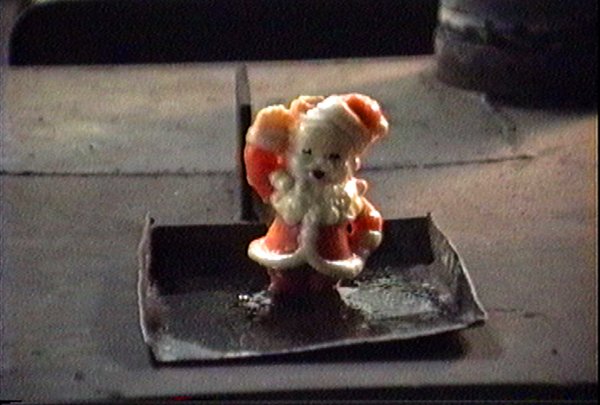
They are called Appalachians, Adirondacks and sometimes they are said to be linked geographically to the Canadian Laurentians. In any case, the snow covered mountains and hills there have that familiar purple/grey aura of bare hardwoods nestled in snow. When winter comes to Utica, it is a Christmas card world straight out of Dickens. VL
WAR
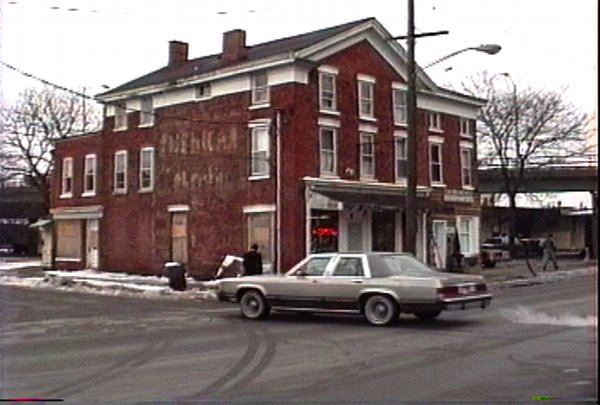
January 11, 1991 – 7 pm, Sculpture Space studio
The radio is on. Politicians are debating the possibilities of going to war. The stove is hot and it’s good because there is a big snowstorm outside. The resonating voices and the radiating heat gets mixed in front of our eyes. After hours of discussion the senators approved the Senate Joint Resolution. War is coming. DD The Persian Gulf War Resolution
NATION OF WARRIORS
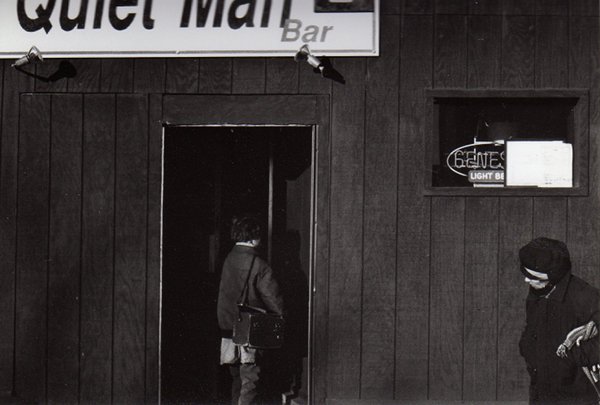
Once the Gulf War started, B52’s made night passes over Utica with the regularity of a milk run. Off they went from the Rome Air Force base, carrying soldiers and supplies from the start to the finish of the bombing time period. Meanwhile the debate raged on NPR, and many discussions in the cafés and on buses turned to worries about the threat of a prolonged state of war. In my heart, I was a visitor to the country, on the streets, I was drawn into the news that made every headline. The waitress’s father-in-law was called up as a reserve officer, one of the finest mechanics in town. The car salesman’s daughter was an infantry soldier, he hoped for the best over coffee and eggs. Generals ‘Stormin’ Norman’ Schwarzkopf and Colin Powell were all over the television news. Rehashed and rehashed, tactical victories gave opportunities for veterans to enter the fray. Old scraps were revisited as the current war played out, and Utica resembled the stage set of The Deer Hunter movie, more and more each day. VL
APARTMENT
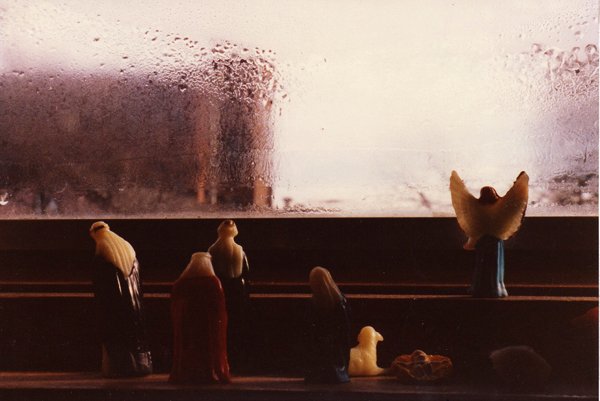
We got a small apartment on 939 Schuyler St. It’s not big but as Jonathan (Kirk) pointed out “it’s cozy”. There’s a hot plate and a toaster but the two can never be powered at the same time, as it will create a short. And we will have to ask the owner to change the fuse. The shower is also ‘unique’; it‘s perfect for anyone under 5 feet. But, best of all are the trains. It was worth taking the apartment. The first time we saw it, we heard a loud sound and then another one, louder, closer. We opened the curtains in a hurry to witness a freight train in all of its glory coming down the middle of the street right under our balcony. You could almost reach out and shake hands with the Conductor! DD
CULTURAL ICONS

Having lived for five years in Kingston, Ontario, as a kid, I was somewhat familiar with the cultural environment of Central and Upper New York State – from television of course. As I sat glued to the T.V., I was storing up a range of programming highlights from Buffalo, Syracuse, Rochester, Watertown, Ithaca, Utica and all points in-between. Cartoons and black and white re-run movies started airing very early in the morning. On weekends and holidays, I woke up early to soak it all in.
Upper New York State was a far cry from what I expected to find in the Big Apple, and yet different from what I had come to know in Canada. With television as my window to the world: life down south in the United States of America, I knew that the hot dogs were bigger, more red; there was a bigger variety of candies; and dime store specialty gifts were more affordable.
All of those years later, as an adult, visiting Sculpture Space brought me to the actual source of some of those cultural icons already familiar to me. I knew before arriving that bowling had been VERY big in Utica. I personally felt that one of the most interesting programs on T.V. was the Sunday bowling. Far from boring, the soothing voice of the announcer whispered the step by step action, building the tension of each player’s profile and emphasizing the high (monetary) stakes involved in winning the tournament. And there were Utica Club Beer ads! The jingle of the tournaments’ sponsor came back to me when I stood in the train yard outside the still-active Utica Club brewery. The factory, with its high chimneys and the oversized letters’ sign towered high above street level, lending a larger than life silhouette to the Utica skyline. VL
STOREFRONTS
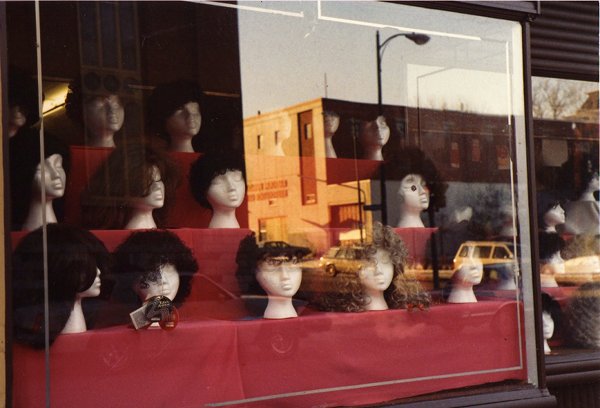
Storefronts are fascinating. They are markers of time, documenting life. In the few weeks since our arrival, we have noticed a lot of wig stores and wonder why. It seems that every block has one. Styrofoam heads with curly blond or long black hair resting on shelves, looking out all day long at people going by. Somewhere downtown, between two wig stores, we saw an abandoned shoe store. The front window is still offering a dazzling display of boxes sitting on pedestals. Everything is coated with a layer of dust, 3 years thick at least. It looks like the tomb of some great Egyptian ruler. There are also wedding dress storefronts. Today we stopped in front of one and took pictures. DD
SCIENCE FICTION MEETS REALITY
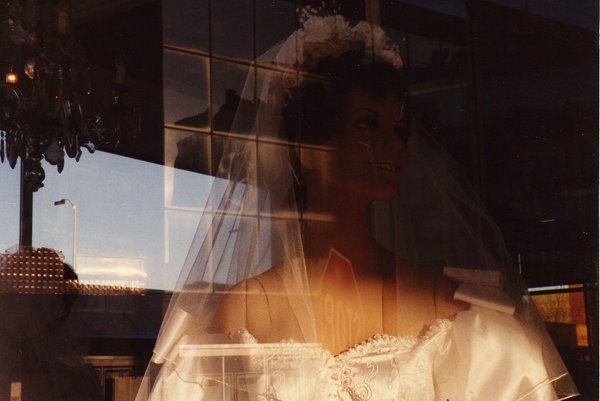
When I walked on the street in Utica, a million story ideas appeared in my mind. Every turn of the corner brought a unique storefront, café or colourful local character. I had travelled all my life but was struck by the rich character of this city. For some reason, each encounter with a store clerk or conversation on the bus, seemed to present a string of other possible outcomes, all of them mysteries.
One day, after being spooked out by passing the darkest of abandoned parkades, I looked into a store window to see a perfectly arranged shoe display of the finest leather shoes. Signs indicated the qualities of the particular brands carried and looking past the window box, in-store displays, and stacks of shoeboxes resembled a neatly organized library, complete with a sliding ladder to reach all of the available sizes. It was definitely a very classy shoe store.
The only quirk about the place was that it was abandoned, and all of the fashions were 1940’s styles. There was a thick layer of dust everywhere and everything was faded. It looked as it the owners had just disappeared into thin air, leaving not a trace, and yet, in this city with a vibrant, animated street scene, no one and nothing had disturbed that shop. I had often thought about the fact that Rod Serling, the science fiction writer of the television series The Twilight Zone had lived in Binghampton, a short distance from Utica. When I thought about some shows from the series, I began to feel that the science fiction reality of his stories were hovering just below the surface here in Utica. VL
STOVE
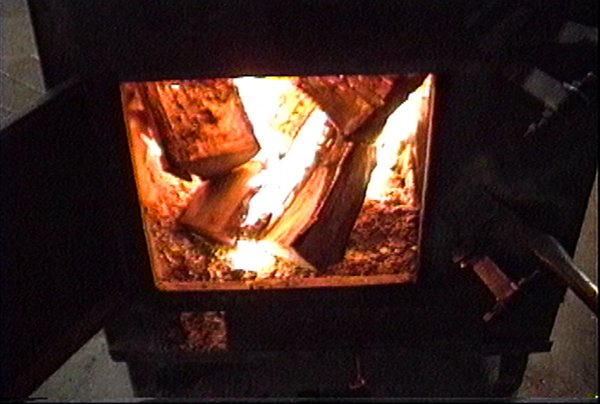
The wood stove at Sculpture Space is incredible. It is a colossus object that looks like nothing else on earth. It is the source of heat for the whole studio, the beating heart that allows residents to carry on. When we arrived, in early December, Sylvia de Swann showed us the cords of wood outside and said, “Use as much as you need”. We did. DD
MUSIC
Music all day, music all night! We all brought our favorite cassettes, but it’s Tracy (Brown) who has the biggest collection. We listen pêle-mêle to: Voivod; John Cale; the grinders and the saws; The Red Hot Chile Peppers; Sinead O’Connor; the MIG welder; Bad Brains; NPR; hammers and cutters; all flowing and bouncing freely, helping us to concentrate and to create. DD
OUTSMARTING THE DOGS
And in Utica there was Sculpture Space, that extremely well equipped and highly accommodating support for sculptors. After a few days, I felt inspired to do a documentary about it. I began to shoot possible cutaways. I carried out preliminary interviews with Daniel, and the other artists currently in residence: Tracy Brown, and Charlie Citron.
WUTR, Channel 2, the local television station supplying a percentage of local programming was located on top of Smith Hill in Deerfield, but its official address was Utica. I got dropped off outside of the station one morning to meet with the Programming Director. Unfortunately, the weight of the impending war was thick in the air and the meeting was brief. If war was declared, all programming would need to focus on that event. Peaceful cultural concerns would be moved to the back burner. I started down the hill to catch the bus, with not much hope for moving the documentary ahead. That was when my real problems arose.
The walk back down was through a remote section of landscape with not much around but the dogs. It seemed that everyone had already left for work and no cars passed me by either way. I would not have cared except the walk was close to two miles and each abandoned home or farm had at least one dog. I quickly developed a life-saving strategies. Looking to the edges of the snow-covered road, I filled my pockets with as many rocks as I could find. As the first of two beagles raced toward me from their driveway, I began throwing rocks. No one was hit or injured but they got the message quickly and doubled back home yelping in defeat. Whew! There were two more encounters and then I used the ‘black bear strategy’ of lifting my black leather coat up high over my head. On both of the other encounters, I charged toward the dogs yelling as loud as I could. Unbelievably, it worked. By the time I got to the bottom of the hill and found the bus stop, a german shepherd in his yard started to run for the driveway, miracle of miracles, that owner was home and yelled for the dog to get back in the house. I returned to Sculpture Space without a strong prospect for the documentary but I had a few stories to tell. My own war to return went well. VL
ESPRESSO
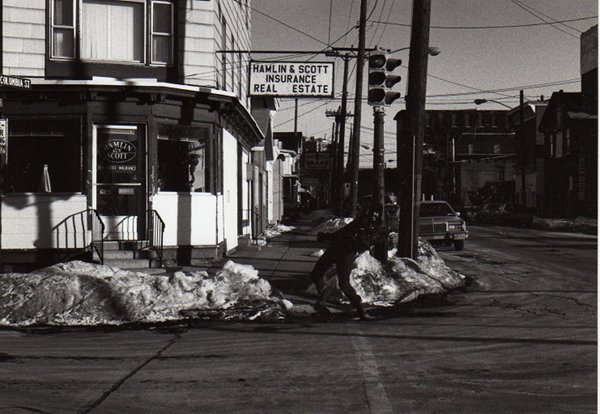
We needed a good coffee, something strong like an espresso. We went out, looking for some. After a little while, we saw in a window display, an espresso machine and some little Italian flags in coffee cups! There was also a very small sign with the magic word Café above the door. Despite the sign, the coffee machine and the flags, this place didn’t really look like a Café or a restaurant. There was something private, secret about it. Guided by our addiction, we opened the door. It was quiet. We saw a long counter and two little red enamel tables. We looked at each other full of hope. As we slowly made our way in, a man showed up and glared at us. There was something Boris Karloff about him, something in his demeanor that was telling us that this might not be the right place. But nevertheless we had found the place, we were in, and we were thirsty, there was no way back. We risked, “We’ll have two espressos?” There was a slight pause, a silence, and then the man pointed to one of the tables. We sat down. There was no music playing, no flowers on the table. He was already behind the counter working. We could feel his gaze. The smell of the coffee started to take over. After he put the cups in front of us, we paid him. He pocketed the money and disappeared behind a curtain at the end of the counter. Then, all of a sudden we heard a flurry of other voices, two or three other men. They were speaking, yelling in Italian, swearing in English, the energy was on the angry side to say the least. It felt weird being there. We hoped that they were not talking about us. We drank our espresso in a hurry, put a fifty-cent on the table and left. As we stepped outside, we could feel the adrenaline rushing in our veins, it felt pretty good. DD
⁂
After Sculpture Space Daniel Dugas and Valerie LeBlanc moved to Chicago where they did each their Master of Fine Arts Degrees at the School of the Art Institute. They each continue to carry out individual creative projects and collaborations. Social and political aspects of the world, as well as the technological changes that continue to augment reality are the pivots on which their practices revolve. At the heart of their activities resides the desire to establish a rapport between what is experienced and what is imagined; the ideas that emerge to see the light of day, and those that remain below. The underpinning motivation is to move communication forward.
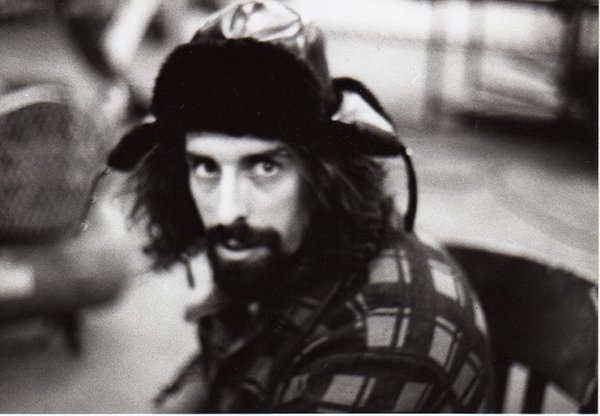 Daniel’s website: http://daniel.basicbruegel.com/
Daniel’s website: http://daniel.basicbruegel.com/
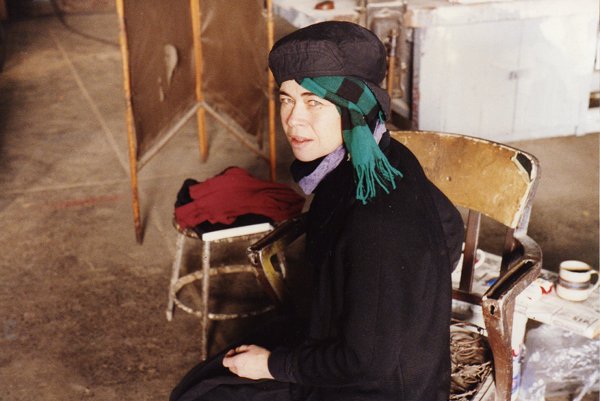
Valerie’s website: http://valerie.basicbruegel.com/
4 short videos YouTube
Sculpture Space 1991 (2011)
Sculpture Space, the internationally renowned artist-in-residence program for sculptors, is celebrating its 35th anniversary and the online magazine JUICYHEADS is doing a feature story about it. As an alumnus I can tell you that this was and is still an amazing place. I had the chance, along with Valerie LeBlanc, to be part of it during the winter of 1990-1991. recently, we sat down, to open up old note books and Hi8 tapes to revisit Utica. These 4 short videos represent part of our Utica experience.
http://www.sculpturespace.org/
NB As a results of bogus copyright infringments warning I decided to delete all my videos from Youtube – Dec 2012
House on Fire (2010)
House on Fire was written on May 3, 2010 after listening reports on the oil spill in the Gulf of Mexico. As of today, June 3, the oil is still coming out and the spill has now reached catastrophic level. Although the text was written early on in this saga, I decided to publish it on my blog as it convey the feelings of disbelief that I feel might be experienced by others. [2777 words]
House on Fire by Daniel Dugas
May 3, 2010. On the radio this morning, I hear that the oil is slowly gushing out, thousands of barrels a day from the floor of the Gulf of Mexico. What does gushing slowly mean? Can the flow of oil come out suddenly, copiously, forcibly like a hemorrhage, and slowly, all at once? Who has qualified the speed of this spill?
This is such an aberration, especially in the light of what happened in 1989 with the Exxon Valdez. How could something like this happen now? It’s not that we did not learn from the past, it’s more like we don’t want to learn from it. Greed is the motivation and greed will define the actions of many of the players involved. bp will fight to survive and its teams of lawyers are surely working overtime. It is important to remember how the tab was settled with the Exxon Valdez, which was repaired, renamed – the S/R Mediterranean and is now registered in Panama. “An Anchorage jury awarded $287 million for actual damages and $5 billion for punitive damages.” [1] After a number of challenges the punitive damages were reduced to $2.5 billion, this again was renegotiated in a lower court to $500 million and finally Exxon agreed in 2008 to pay 75% of the final invoice. [2]
Cheapness and greed are the two motors that propel and make the big oil machines breathe, eat and grow. The cargo barge Irving Whale is another good example. It sank in 1970 near the Magdalen Islands in the Gulf of St Lawrence with its cargo of PCB-laden bunker oil. In the days following the sinking, oil washed ashore onto the islands. There are, to this day, more than 200,000 bags of oil debris buried under the beautiful dunes. The clean up effort continues and officials are still removing the bags as they surface. [3] According to the scientific data of the time, the cold waters of the Gulf made the oil congeal and reduced leakage from the barge. The prognosis changed in the early 90’s when scientists noticed PCB’s leaking from the carcass of the boat. The Government of Canada tried unsuccessfully to force Irving Oil [4] to salvage their boat but Irving had… ‘abandoned ownership of the wreck, since it was considered to be in international waters.’ [5]
When all failed, the Canadian Government went ahead with the recovery on its own. The doomed barge was hoisted from the bottom of the sea and brought back to Halifax, Nova Scotia, where it was going to be cut into pieces and sold for its weight as scrap metal. The Irving lawyers were waiting in the wings, as soon as the ship reached its final destination the lawyers put an injunction rightfully claiming its valuable cargo. They pumped the oil out of the barge and sold it. If this operation would have taken place today, it is certain that the marketing branch of the company would have re-branded the operation as a great recycling project. Something like: “Hey, nothing is lost, nothing is created, everything is transformed type of event.”
bp has also invested in its branding, they are after all, the greenest of the oil giants. Its glorious logo is a vibrant leaf-like-sun-emitting symbol of hope and responsibility, a beacon of everything green, or is it? [6] Whatever lies under the beauty of the graphic remains a mystery but the image is so beautiful that we want to trust it. Even the Green Party of Canada must have thought that it was irresistible; as they too have a similar emblem.
Since the explosion of the Deepwater Horizon drilling platform, on April 20, the disaster and the coverage has been as controlled as it can be. Two weeks later I am puzzled by the lack of attention and coverage. It is as if the spill was a small thing, something that is part of the game, a calculated risk. I heard earlier today, on the CBC airwaves, the soothing voice of Dr. Ed Overton, Professor Emeritus at Louisiana State University’s Department of Environmental Science. [7] Here, finally, we have an expert talking about the oil spill. He spoke of the uncertainty and the scope of this event, noting in a matter of fact way, that it will never be as huge as the Exxon Valdez, “… I don’t think that it will be that bad. ” The good doctor, talked about the oil spreading over a much longer period of time than the ill fated tanker and explained that the effects will be different, “… this is a long-term affair spread over a long period of time …”
I admit that Napoleon could have been killed with a bullet but he was slowly poisoned instead. The difference is minute but the outcome is the same. Dr Overton went on to compare the situation to a house fire; ‘a room might be on fire, but it doesn’t mean that the house is in danger.’ Here I’m guessing that the doctor might be comparing the oil spill, or the Gulf of Mexico to the ‘room’ and the rest of the planet to the ‘house.’ (?) He was actually talking about the environment as a series of compartments, secluded from one another, with fire doors in between habitats. (much like a pillbox of weekly medication) Overton claimed to be not associated with any oil company, but really? Considering the size and significance of the Gulf of Mexico to the planet’s ecology, how could an environmental professor, acting on his own, create this house analogy, and not show more concern for the kitchen?
In the 1970’s the Canadian government built a series of American style bungalows on native reserves in Manitoba. The native people were puzzled by the architecture of the buildings, wondering why someone had to open a door and go through a hallway to open another door to go into another room. It seemed unnecessary and they decided to re-design their homes, opening them all up, effectively creating a space closer to their traditional view of the world. Everybody can see that the clouds and the birds cross the political borders of our world without even thinking about it, and why would they? Like acid rain, oil will not stop on a specific latitude or longitude.
On their website, Time Magazine has brought back its top 10 environment disasters page. The oil spill in the Gulf of Mexico might even make the list if the leak, as they call it, continues. Oil companies have a specific way of wording their messages. A leak sounds to me like a dripping kitchen tap, something annoying but that you can learn to live with. Obviously this is more than that; it is a rupture, a break, a hole. Suncrude, the world’s largest producer of synthetic crude oil from oil sands in Alberta is the owner on the infamous Aurora tailings pond where some 1,606 waterfowl died after landing in it. [8] The idea of a pond is good, it sounds small and cute, it brings forth image of the famous Walden Pond; a place to reflect and think. They are places where life forms flourish. But those tailings ponds are artificially created, huge lake-like forms where poisons are deposited; they are settling areas for toxic waste.
This latest catastrophe in the Gulf of Mexico comes after years of environmental awareness, after years of being told the difference and the importance of not using plastic bags, which are made of oil, after years of composting, of sorting through the garbage – recycling the dry from the wet, the toxic from the organic. We were told, and we believed, that the biggest part of the problem resided with the consumers and not the industries, with us – and not – with them. ‘Our actions will save our fragile planet’, and we bought it. We thought that it was important enough. We listened to Al Gore warning us about the warming of the planet, we accepted to pay more for green energy; every little bit helps as they say. After two weeks, where are Gore and Suzuki? Did they say anything? Will they? Should they? Aren’t their rooms heating up from this localized fire? Is there smoke seeping under their doors? Should I really put my chip bag in the trash or just toss is out in this great garbage can of a world?
We live in a world of slogans, the great motivators of our lives, along with the loyalty programs that exist out there. Beyond Petroleum (bp), Make things better (Toyota), Solutions for Today’s Energy Challenges (Halliburton) or Solutions are in our nature (David Suzuki) – they all offer visions of optimism and possibilities. But this time the deception is complete, our optimism exhausted. What made us believe them, what made us buy into their dreams? What is the next step, the next greenwash, the next empty word to be flaunted before our eyes like carrots. Is there a roundabout in the dead end of marketing?
Environment has become a buzzword – or it was until recently – and a dreamscape where we project ourselves, perhaps into the future. Avatar worked because of all of those years of learning, of trying to be more in tune with Mother Nature, but Mother Nature is about to become one big ‘fucked up’ lady. But wait! There is hope, bp has a plan, the building of a Containment Pollution Chamber as they call it, a huge compartment of steel to catch the oil and pump it onto a barge waiting at the surface. [9] The manager of the Operations for bp assures the public that bp has a plan B, C, D and F, in case the Containment Pollution Chamber does not work. How can bp have so many clean up plans when they were out there drilling without any safety net? Did they really think that all of their dollar bills would cushion their fall? But here we are, in week number 2, and everyone is enthralled about the engineering marvel of the container.
CNN:
It sounds like a Hollywood movie. An impending disaster — think the disabled spacecraft in “Apollo 13″ or the asteroid hurtling toward Earth in “Armageddon” — prompts a daring intervention by engineers to save the day.[10]
Somewhere else another announcer talks about the box as some kind of Egyptian project. Hooray! We will have our own pyramid! The cable news networks keep showing workers welding the metal sarcophagus that will make everything go away. Why are we so in awe in front of this engineering accomplishment? Is it because it creates a simple superhero narrative, with good guys on one side and bad guys on the other. Evil is lurking, slithering, dripping out of the kitchen tap, and meanwhile … the Heros are working overtime on a plan to place a gigantic encasement tomb to save the day. The problem is that the good guys and the bad guys are one entity, one being. And why are we so excited by this chamber and not by the remote control switch technology lacking on the Deepwater Horizon Platform, and still lacking on all of the other 4,000 drilling platforms in the Gulf of Mexico? [11] And how come it was not there? The European Union forces drilling platforms to have a remote control switch to shut off wells. [12] We have the same idea in our homes, which we all agree is a good one – a switch to turn off the water main in case there is an emergency. It is mandatory in EU but not in England where bp has its headquarters. The company refused to implement the practice because of its cost, about half a million dollars.
Will this go away? When will it go away? When will you be able to go to the store and buy Gulf shrimps; when will you go back into the water; walk on the beaches and play in the sand? The executives of bp are as picky as everybody else when it comes time to choose the location of their next holiday. If this spot is ruined, it does not really matter, their world is made of many compartments and they will find a corner that is still unspoiled, pristine, the perfect fit for their families to frolic candidly. And if there are no more corners, they will build one and put fences around it – period.
If we worry about products that are not tested on animals we should be dead worried about this experiment. There has never been anything like it; it eclipses all that we have known. And beside the health risks involved, there are also the risks to the reputation of prominent figures. Armies of lawyers from bp to Halliburton are already devising their escape routes, planning to surrender on their own terms, perhaps even negotiating for immunity – with bonuses. At worst they will go bankrupt like Union Carbide did following the Bhopal chemical disaster in 1984. [13] The bankruptcy of Union Carbide permitted Dow Chemical to purchase the corporation without acquiring the Bhopal legacy. The lawyers for bp and its associates are certainly looking at this option right now. And let’s not forget the banks, which were too big to fail, yet they were rescued. Could bp fall into the same category?
Then on May 1, came Faisal Shahzad, the Times Square car bomb terrorist. [14] Was this for real? The timing of this failed bombing was very strange. It pulled so much attention away from bp that I have been wondering if this was not a set up. Yes I know, another conspiration theory, but you have to admit that timing is everything. The Nashville flooding, on the other hand, would have be too difficult to stage even for big oil.
Even if the Time Square event is not related to the spill, it does bring an interesting thread into play. No terrorist could have created such havoc as bp is doing right now. The effects, the range of devastation and the implication for the ecosystems and the people who live in them is way outside the Al-Qaeda league. The impending approach of the oil slick is terrorizing people and animals alike, it is creating fear and anxiety – in other words: terror. Al-Qaeda could not have done this, but here we are, with bp at the helm. It is backed by the Government of the United States of America that has sanctioned offshore drilling; leading us to rest assured in the belief that it was clean, safe, and environmentally friendly. Good going!
Could this become a case of National Security? Let’s imagine for a moment that the oil slick has reached the coast, and is making its way into the ports, like Mobile, Alabama for example. And then a little thug, a budding homegrown terrorist or one from abroad, goes out on a stroll, throwing a match in the mixture. Could this happen? What would we do with the bp executives then, would they be going to Guantanamo? And what about the US government, would heads roll there? Unlikely scenario.
Could this be a case of crime against Humanity? The human specie, humankind, what is known as Humanity is intimately intertwined with the animal kingdom, isn’t it Mr. Susuki? What is done to them is done to us? Maybe? Unlikely scenario.
Headlines:
bp Finally Caps The Well!
Bravo To The Savants!
World Wins Battle Against Evil!
And then, for years and years and years the company battles in the courts, negotiates the terms of reality, reduces and minimizes its responsibilities. The lawyers decorate their offices and buy new suits and then redecorate again and buy more suits until all the money has gone out, like the oil of an old well. Bankruptcy is declared and then another company comes along and takes it over, plucking it like a dangling fruit, ready to be eaten. Likely scenario.
Daniel Dugas ©
May 3, 2010
[1] http://en.wikipedia.org/wiki/Exxon_Valdez_oil_spill#Litigation_and_cleanup_costs
[2] http://www.reuters.com/article/idUKN2641081120080827
[3] http://www.cbc.ca/canada/montreal/story/2010/01/08/magdalene-islands-oil-recovery.html
[4] Irving Oil is a gasoline, oil, and natural gas producing and exporting company part of the J.D. Irving Limited privately owned conglomerate company headquartered in Saint John, New Brunswick
[5] http://en.wikipedia.org/wiki/ATL_2701#Pollution
[6] http://www.uow.edu.au/~sharonb/bp.html
[7] http://www.cbc.ca/mrl3/8752/asithappens/aihstreaming_20100503_01.wma
[8] http://www.edmontonjournal.com/business/Tailings+pond+breaks+federal+officer/2663851/story.html
[9] http://www.cnn.com/2010/US/05/03/oil.spill.desperate.measure/index.html
[10] http://www.cnn.com/2010/US/05/03/oil.spill.desperate.measure/index.html
[11] http://www.csmonitor.com/2005/0726/p03s01-usgn.html
[12] http://online.wsj.com/article/SB10001424052748704423504575212031417936798.html
[13] http://en.wikipedia.org/wiki/Union_Carbide
[14] http://en.wikipedia.org/wiki/Faisal_Shahzad
Blog 1979 (2004)

[Jacques Dubé, Jean-Marc Dugas et Daniel Dugas]
Twenty-five years ago I went on a hitchhiking trip around Canada and the USA. I kept an obsessively detailed journal of my adventures. The voyage started in Moncton, New Brunswick, on June 27, 1979 and ended, back in Moncton, on September 2. During these 68 days I hitched 115 rides and walked 363.5 kilometers. I ate parsley for three days straight, morning, noon and evening, with Jeffrey. He had a pack sack full of it and was happy to share the green stuff. One morning I stood half awake in a bank lineup in San Francisco only to be shaken by the biggest earthquake there in 68 years. I got robbed a couple of times, once by an ex Hell’s Angel who was mad that I did not carry a camera. I got kicked out of a crowded van, in the middle of the night by a troop of Moonists en route for a “retreat” in the Valley. I made a big mistake by putting my hand in Teresa’s pants while sleeping in the back of a transport truck. The truck driver was giving Byron, his girlfriend Teresa and me a ride from South Carolina towards New York… My rudimentary English of that time, my mouth harp, and my innocence probably saved my life many times.
Recently while cleaning some old boxes I found the journal, which I thought was lost long ago. This blog re-tells some of my stories.
Starts again: June 27, 2004
La boîte de Pandore (1991)
• Galerie d’art Louise et Reuben-Cohen de l’Université de Moncton, NB, 9 juillet – 31 août 2008
• A.K.A. Saskatoon, SK, June 7 – June 29 1991
• Galerie Sans Nom, Moncton, NB April 2 – April 23 1991
Created in January and February 1991 during a residency at Sculpture Space,Utica, NY, an internationally reknowned artist-in-residence program for sculptors.
The New Pandora’s box – an installation-projection about television.
I left Canada for England with a grant from the Canada Council – August 1, 1990 on the first leg of a world research trip. The idea was to revisit the myth of Pandora’s Box and to capture ‘evils of the world’ through video and sound recordings. The invasion of Kuwait by Iraq on August 2 forced me to change my itinerary and to reconsider the parameters of my research. During the 40 days of my travel, I saw a world glued to television sets, waiting for something to happen. Television as medium evolved to be both topic and base for my project.
The Installation was made of 5 elements, four buoys: rocking structures made of wood and the control cabinet: the disc. Each buoy was fitted with a slide projector and a cassette deck connected to the disc. Visitors could activate projections and soundtracks by opening the drawers of the cabinet.
The slides and the soundtracks were constructed with material garnered from television itself, photo stills and sound bites taken from talk shows and daytime TV.
The construction of The New Pandora’s Box took place at Sculpture Space from December 2, 1990 to January 30, 1991. Operation Desert Storm began with an aerial bombardment on 17 January.
Dimensions
4 pieces: 75 in h. X 24 in w. X 20 in d.
1 piece: 24 in dia. X 5 in h.
Soundtracks duration: 45 minutes
240 slides
Daniel H. Dugas
Archives
Blogroll
- A.I.R. Vallauris
- ACAD
- Adobe additional services
- Adobe Creative Cloud
- AIRIE
- Amaas
- Amazon Author Central
- ARTothèque
- Australian Poetry
- Basic Bruegel
- Bitly
- CCCA
- CDBaby
- Cycling 74
- Dissolution
- Éditions Prise de parole
- Emmedia
- eyelevelgallery
- FAVA
- Festival acadien de poésie
- Festival FRYE Festival
- FILE – Electronic Language International Festival
- Freeware list
- Fringe Online
- Galerie Sans Nom
- Gotta Minute Film Festival
- Instants Vidéo
- JUiCYHEADS
- Kindle Direct Publishing
- Klondike Institute of Art and Culture
- La Maison de la poésie de Montréal
- La Maison de la Poésie et de la Langue française Wallonie-Bruxelles
- Laboratorio Arte-Alameda
- Le Centre Jacques Cartier
- Liberated Words
- Maison Internationale de la Poésie – Arthur Haulot
- MediaPackBoard
- Miami Book Fair International
- Monoskop
- Mot Dit
- NSCAD University
- Paved Arts
- PoetryFilm
- Portail des auteurs du Nouveau-Brunswick
- RECF
- Revue Ancrages
- Salon du Livre du Grand Sudbury
- Sculpture Space
- Subtropics.org
- Sydney college for the arts
- The Centre for Contemporary Canadian Art
- The New Gallery
- Trevigliopoesia
- tumbler-documents
- V Tape
- Valerie LeBlanc
- VideoBardo
- Void Network-Κενο Δίκτυο
Categories
- #covidpoèmes
- Advertisement
- AIRIE
- Ancrages
- anthology
- Anthropocene
- Architecture
- Around Osprey
- art
- Article de presse
- arts visuels
- audio
- Australian Poetry
- Basic Bruegel Editions
- Book
- book fair
- Cafe Poet Program
- Ce qu'on emporte avec nous
- Citations gratuites
- Collaboration
- commentaire
- commentary
- Compte rendu
- conférence
- Conservation Foundation of the Gulf Coast
- COVID-19
- Critique littéraire
- culture
- Daniel Dugas
- Design
- Édition Michel-Henri
- Éditions Perce-Neige
- Éloizes
- Emmedia
- emoji etc | émoji etc
- Environnement
- essai
- essay
- Everglades
- Exhibition
- festival
- Festival acadien de poésie
- Festival Frye Festival
- FIPTR
- Flow: Big Waters
- Fundy
- Habitat
- installation
- Instants Vidéo
- interactivity
- journal
- JUiCYHEADS
- Kisii
- L'Esprit du temps
- laptop
- Leaving São Paulo
- lecture
- Livre
- logos
- Magazine
- Miami Book Fair
- Moncton 24
- novel
- OASIS
- oil spill
- perception
- performance
- Photo
- poésie
- Poetic Licence Week
- Poetry
- politics
- politique
- press
- Prise de parole
- Revue Ancrages
- salon du livre
- sculpture
- Sculpture Space
- sound
- Souvenirs
- Spirit of the Time
- Style & Artifacts
- Symposium d'art/nature
- talk
- television
- The New Gallery
- Uncategorized
- Valerie LeBlanc
- vidéo
- vidéopoésie
- Videopoetr/Vidéopoésie
- videopoetry
- visual arts
- What We Take With Us
- youth literature








